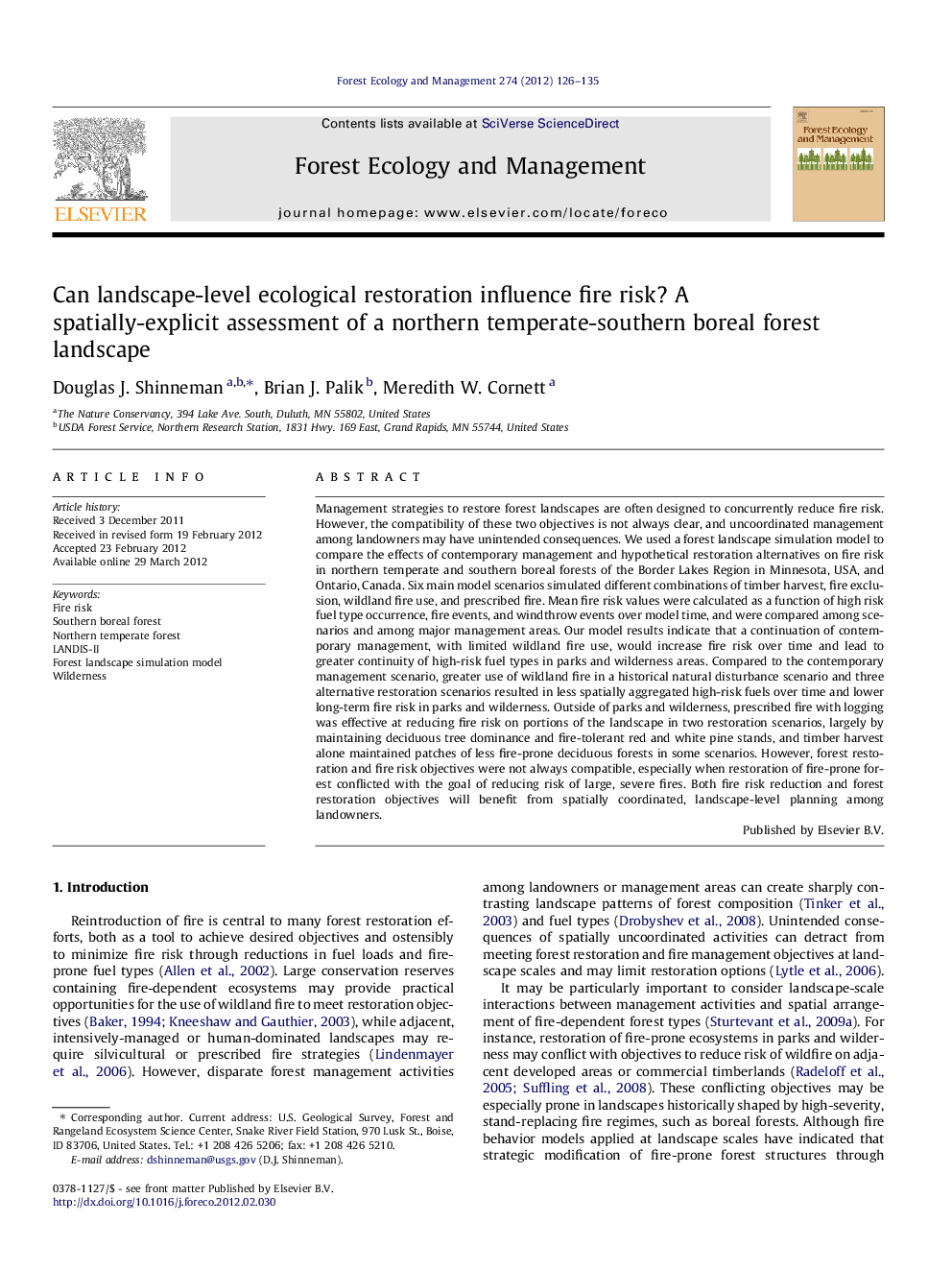| کد مقاله | کد نشریه | سال انتشار | مقاله انگلیسی | نسخه تمام متن |
|---|---|---|---|---|
| 87177 | 159236 | 2012 | 10 صفحه PDF | دانلود رایگان |

Management strategies to restore forest landscapes are often designed to concurrently reduce fire risk. However, the compatibility of these two objectives is not always clear, and uncoordinated management among landowners may have unintended consequences. We used a forest landscape simulation model to compare the effects of contemporary management and hypothetical restoration alternatives on fire risk in northern temperate and southern boreal forests of the Border Lakes Region in Minnesota, USA, and Ontario, Canada. Six main model scenarios simulated different combinations of timber harvest, fire exclusion, wildland fire use, and prescribed fire. Mean fire risk values were calculated as a function of high risk fuel type occurrence, fire events, and windthrow events over model time, and were compared among scenarios and among major management areas. Our model results indicate that a continuation of contemporary management, with limited wildland fire use, would increase fire risk over time and lead to greater continuity of high-risk fuel types in parks and wilderness areas. Compared to the contemporary management scenario, greater use of wildland fire in a historical natural disturbance scenario and three alternative restoration scenarios resulted in less spatially aggregated high-risk fuels over time and lower long-term fire risk in parks and wilderness. Outside of parks and wilderness, prescribed fire with logging was effective at reducing fire risk on portions of the landscape in two restoration scenarios, largely by maintaining deciduous tree dominance and fire-tolerant red and white pine stands, and timber harvest alone maintained patches of less fire-prone deciduous forests in some scenarios. However, forest restoration and fire risk objectives were not always compatible, especially when restoration of fire-prone forest conflicted with the goal of reducing risk of large, severe fires. Both fire risk reduction and forest restoration objectives will benefit from spatially coordinated, landscape-level planning among landowners.
► We modeled forest management effects on fire risk using a landscape model.
► Management scenarios affected fire risk and continuity of high risk fuel types.
► Restoration scenarios reduced high-risk fuel continuity in wilderness.
► Timber harvest and prescribed fire reduced fire risk near developed areas.
► Forest restoration and fire risk objectives were not compatible in all areas.
Journal: Forest Ecology and Management - Volume 274, 15 June 2012, Pages 126–135